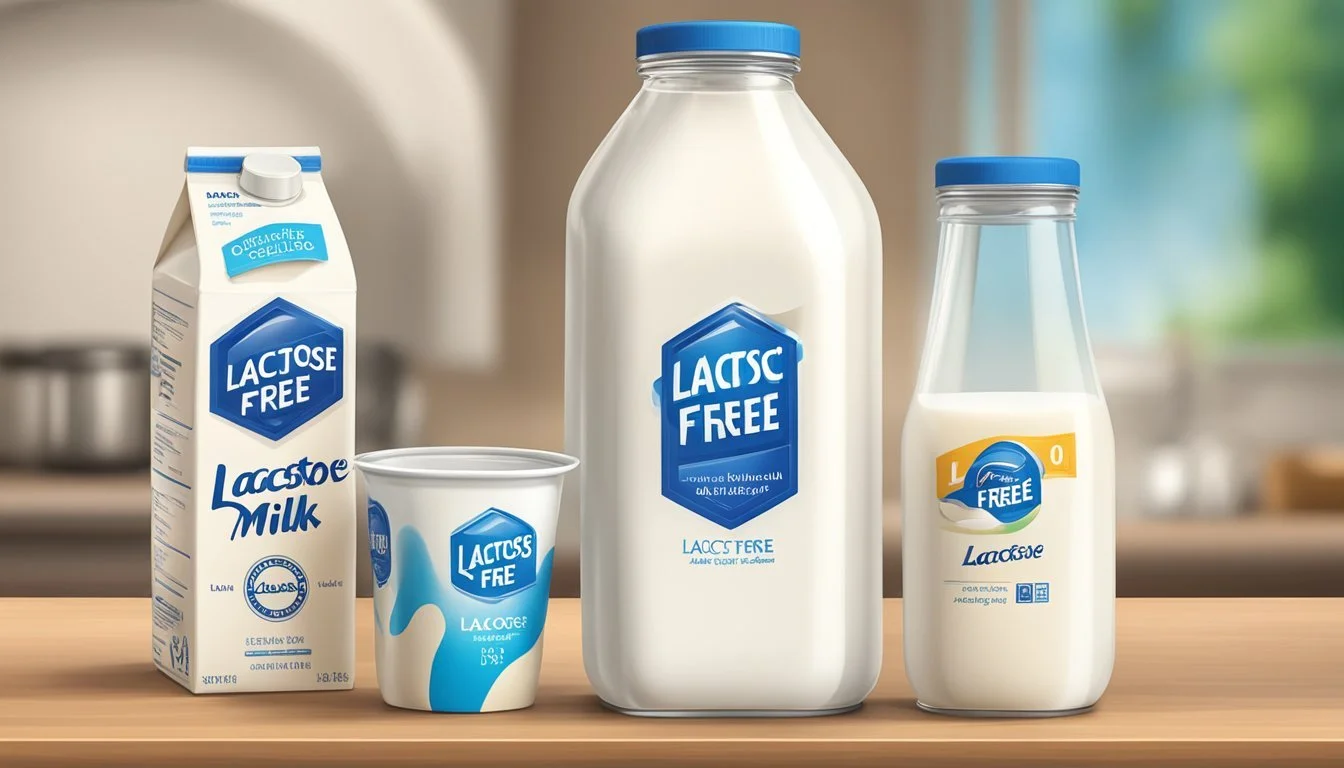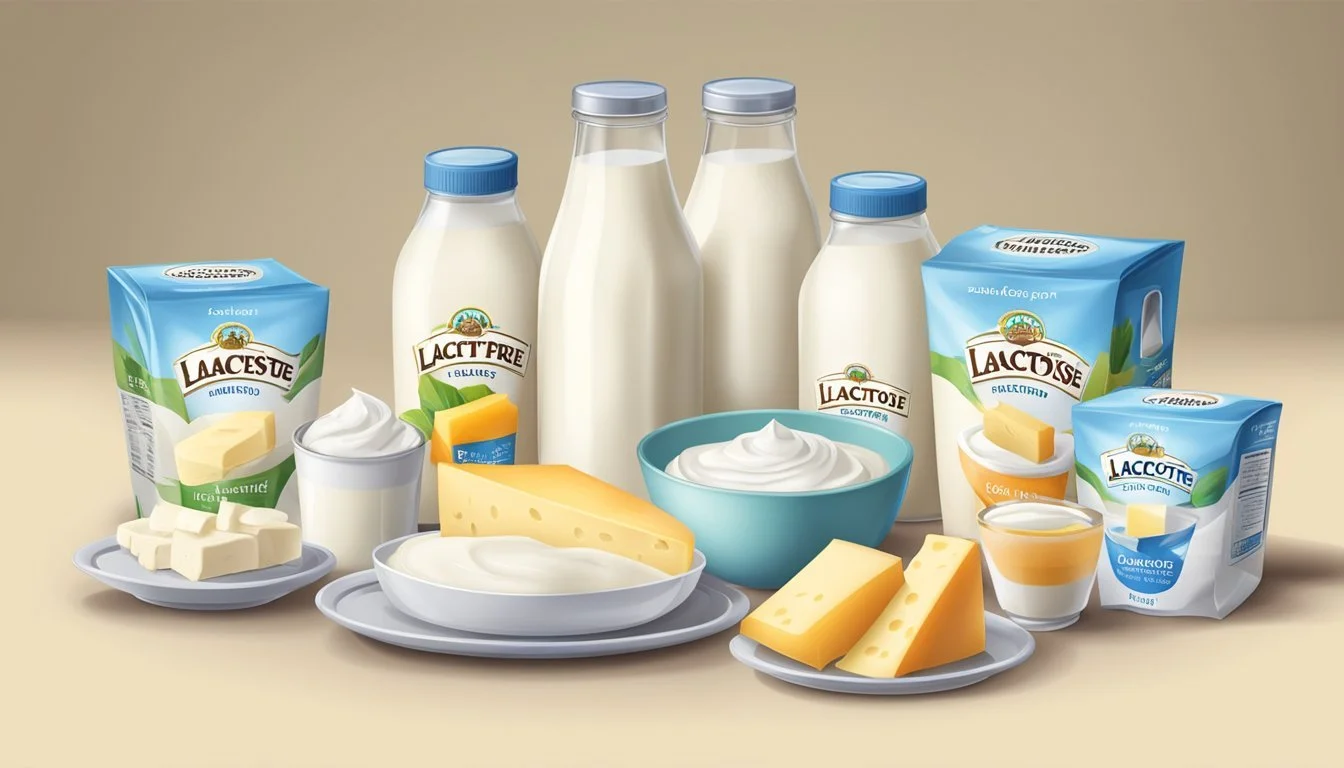Is It Safe to Consume Lactose-Free Products for Non-Lactose Intolerant Individuals?
Understanding Dietary Choices
Consuming lactose-free products is considered safe for individuals, regardless of whether they have lactose intolerance. Lactose-free milks, such as Lactaid, are specifically designed for those with lactose intolerance, a condition where the body is unable to produce enough lactase, the enzyme needed to break down lactose found in milk. These products contain added lactase to pre-digest the lactose, effectively preventing the discomfort and digestive issues that lactose can cause for those with intolerance.
For those without lactose intolerance, lactose-free milk offers an alternative to regular milk that may be chosen for various reasons, including personal preference or perceived health benefits. The nutritional profile of lactose-free milk is largely comparable to regular milk, as it contains similar amounts of essential nutrients including protein, calcium, and vitamin D. The absence of lactose does not affect the other nutritional components, making it an equally nutritious part of a balanced diet.
It's also worth noting that lactose-free milk often tastes sweeter than regular milk due to the presence of glucose and galactose, the two simpler sugars that result from the breakdown of lactose. The consumption of lactose-free products by those not affected by lactose intolerance does not present health risks and can be integrated into the diet without concerns related to lactose digestion.
Understanding Lactose Intolerance
Lactose intolerance is a common digestive issue where the body cannot digest lactose, often leading to discomfort after consuming dairy. Understanding the nature of this condition and how it is diagnosed are essential first steps.
Defining Lactose Intolerance
Lactose intolerance occurs when the small intestine doesn't produce enough of the enzyme lactase, which is necessary for breaking down lactose, the sugar found in milk products. Without adequate lactase, lactose remains undigested, causing symptoms such as diarrhea, bloating, gas, and nausea. Typically, these symptoms appear within a few hours after consuming lactose-containing foods or drinks.
Causes and Diagnosis of Intolerance
The root cause of lactose intolerance is the small intestine's reduced ability to produce lactase. This can occur due to genetic factors, particularly in Asian and African populations, with the condition often developing as early as childhood. Moreover, it may result from other conditions that damage the small intestine.
For diagnosis, medical professionals may recommend a lactose intolerance test, like the hydrogen breath test. This test measures the amount of hydrogen in a person's breath after they consume lactose, which can indicate how well the body is digesting the sugar. There are also other methods, such as the lactose tolerance blood test, that can assess how the body reacts to lactose.
Lactose-Free Products Overview
Lactose-free products cater to those with lactose intolerance, offering alternatives to traditional dairy items by removing or altering the lactose content. These products maintain the nutritional profile of dairy while preventing the discomfort associated with lactose digestion.
Types of Lactose-Free Foods
Milk: Lactose-free milk is the common substitute for regular milk, having a similar flavor and nutrient profile.
Cheese: Hard cheeses naturally contain less lactose and there are also specific lactose-free cheese options available.
Yogurt: Certain types of yogurt that contain live and active cultures may be easier to digest and some are specifically crafted to be lactose-free.
Ice Cream: Lactose-free ice cream is produced to offer the creamy taste without the lactose content.
Butter: While naturally low in lactose, there are also lactose-free butters on the market.
How Lactose-Free Products Are Made
Lactose-free dairy products are typically made by adding the enzyme lactase during processing. This enzyme breaks down lactose into glucose and galactose, simpler sugars that are easier to digest. Some products are fermented with bacteria that produce lactic acid, which also helps break down lactose, resulting in what is often labeled as lactose-reduced.
Reading Labels on Lactose-Free Items
Ingredient List: Look for terms like "lactose-free" or the specific mention of the lactase enzyme.
Lactose-Reduced: Some labels may indicate that the product is lactose-reduced, which means it contains lactose but in lesser amounts.
Milk Solids: Products without the lactose-free label but with milk solids listed may still contain lactose and should be approached with caution by individuals with lactose intolerance.
Health Aspects of Lactose-Free Consumption
Consuming lactose-free products is generally safe, with considerations toward nutritional content and the absence of lactose, which could affect digestive processes for those who are not intolerant.
Nutritional Considerations
Lactose-free dairy products offer similar levels of calcium and protein as their lactose-containing counterparts. These foods are typically fortified with the enzyme lactase to target lactose digestion issues. Individuals consuming lactose-free products may still maintain a balanced diet rich in essential nutrients. For those concerned with nutritional balance, a dietitian can provide guidance to ensure all dietary needs are met.
Calcium: Important for bone health, and often enriched in lactose-free products.
Protein: Essential for the body's various functions, present in equal amounts as regular dairy products.
Other Nutrients: Including vitamins such as Vitamin D, also included to mirror the nutritional profile of standard dairy foods.
Potential Side Effects for Non-Intolerants
For individuals who are not lactose intolerant, consuming lactose-free products typically does not cause adverse effects. These options can seamlessly integrate into one's diet without prompting symptoms associated with lactose intolerance, such as bloating and diarrhea. However, some might perceive a difference in taste due to the presence of glucose and galactose, the breakdown products of lactose. If symptoms do occur, they are most likely linked to components other than lactose, and reducing intake or consulting with a healthcare professional may be advisable.
Inclusion in Diet
Consuming lactose-free products is a safe alternative for those without lactose intolerance, offering similar taste and nutritional benefits as their lactose-containing counterparts.
Incorporating Lactose-Free Products into Meals
Lactose-free milk can be seamlessly integrated into an individual’s diet as it possesses the same essential nutrients, such as protein and calcium, as regular cow’s milk. It's produced by adding the enzyme lactase to regular milk, which breaks down lactose, thereby making it digestible for everyone. Lactose-free milk can be used in cooking recipes, cereals, and coffee, just like traditional milk. Similarly, lactose-free cheese and yogurt are great options that can be included in sandwiches, salads, dressings, and desserts without the worry of digestive discomfort.
Alternatives to Lactose-Containing Foods
For those who opt for non-dairy variations, there is a range of alternatives available that suit different dietary preferences and nutritional needs. Soy, almond, and oat milk are popular choices, each offering unique flavor profiles and health benefits. Hard cheeses like cheddar and Swiss have naturally lower lactose levels and can be tolerated by many individuals with lactose sensitivity. Kefir, a fermented dairy product, is another alternative that not only provides the creamy consistency one might miss when avoiding lactose but is also praised for its probiotic content. These options cater to both lactose-intolerant individuals and those who choose lactose-free products for personal preference or dietary diversity.
Case Studies and Expert Opinions
This section examines empirical evidence and recommendations from health experts regarding the use of lactose-free products by individuals without lactose intolerance.
Clinical Studies on Lactose-Free Diets
Clinical studies have shown that lactose-free products can be safely consumed by individuals who do not have lactose intolerance. These products contain lactase, the enzyme that breaks down lactose, making them digestible for everyone. Research has not indicated any adverse effects from the consumption of lactose-free products by those without lactose intolerance. The products still provide essential nutrients, such as calcium and high-quality protein, which are inherent to dairy.
Key Nutrients: Same as regular dairy (Calcium, Protein)
Digestibility: Suitable for all, regardless of lactase production
Nutrient Analysis of Lactose-Free vs. Regular Dairy:
Nutrient Lactose-Free Dairy Regular Dairy Protein (per cup) 8g 8g Calcium (per cup) 25% Daily Value 25% Daily Value Calories (skim, per cup) 90 90
Guidance from Nutrition Professionals
Dietitians and nutrition professionals generally agree that lactose-free alternatives are a safe component of the diet for people without lactose intolerance. They recommend lactose-free products as a part of a balanced diet, especially if consumers prefer the taste or experience of these products. The role of the dietitian is critical in ensuring that patients follow a diet suited to their needs—whether managing lactose intolerance or ensuring an overall balanced diet without unnecessary restrictions. When a prescription of specific dietary products is required for medical reasons, healthcare professionals tend to be cautious and recommend alternatives that align with the individual's health condition.
Professionals' Consensus:
Lactose-free products are safe for consumption by the general population.
It's important to maintain a balanced diet, whether including lactose-free products or not.
Personal preference can guide the choice of regular versus lactose-free dairy without health detriment.
Prescriptions for particular diets should be followed as directed by healthcare providers.
Additional Considerations for Consumers
When selecting lactose-free products, consumers need to evaluate their cost-effectiveness and assess how these choices align with personal values and lifestyles.
Cost and Accessibility of Lactose-Free Options
Lactose-free products are often more expensive than their lactose-containing counterparts due to the additional processing required to remove lactose or add lactase enzyme. Price variations exist among brands and types of lactose-free foods. As an example, lactose-free milk can cost anywhere from 20% to 50% more than regular milk. Accessibility can also vary, with urban supermarkets typically offering a wider selection of lactose-free foods compared to rural areas.
Lifestyle and Ethical Choices
For some individuals, choosing lactose-free products extends beyond dietary restrictions and delves into ethical considerations. Plant-based lactose-free alternatives such as almond milk or soy milk are frequently chosen by vegans or those aiming to reduce animal product consumption. These alternatives carry labels indicating if they are fortified with calcium and other nutrients to ensure they meet nutritional needs. In addition, many people opt for lactose-free options as part of a broader commitment to a specific diet or to cater to the food preferences of family and friends who are lactose intolerant.







